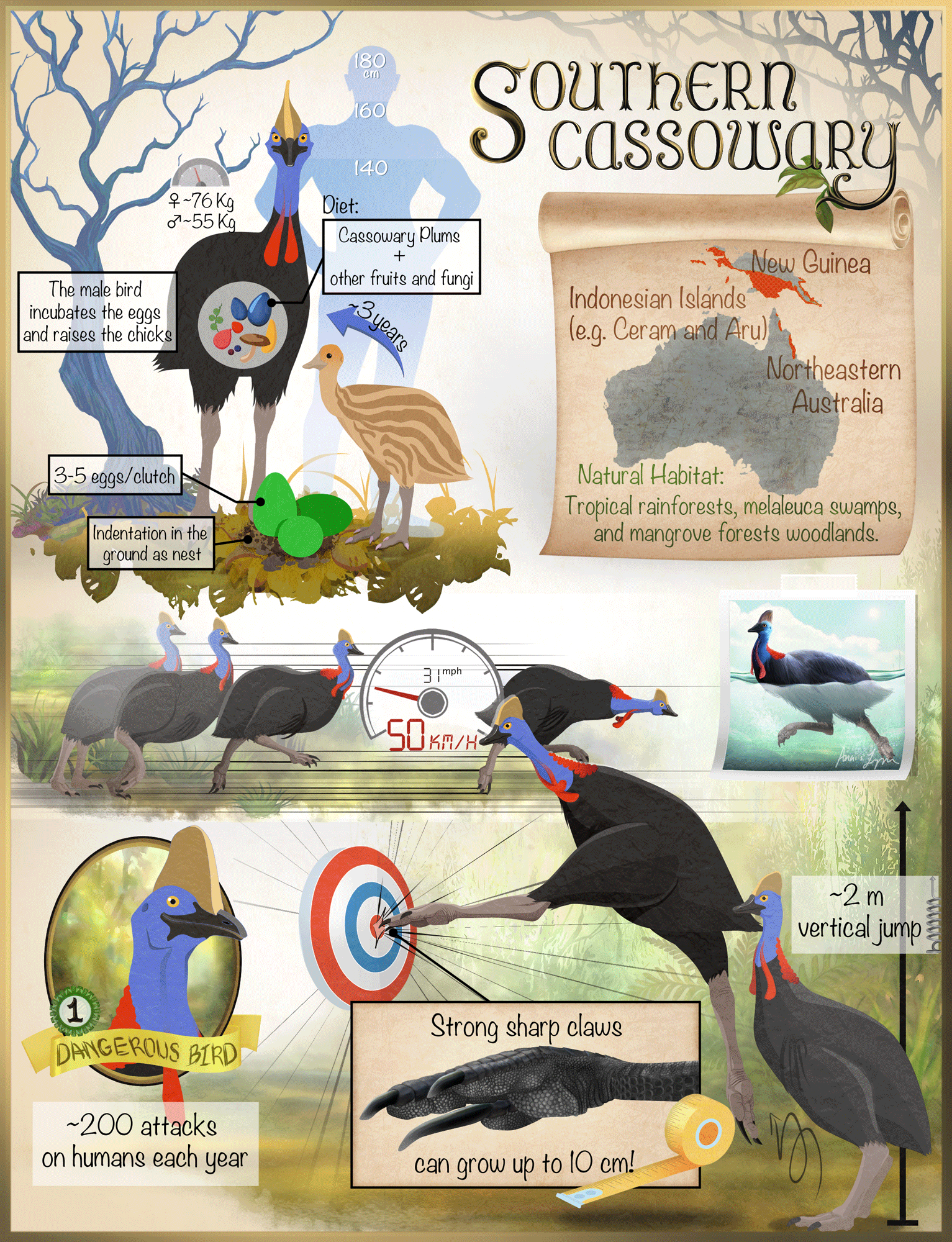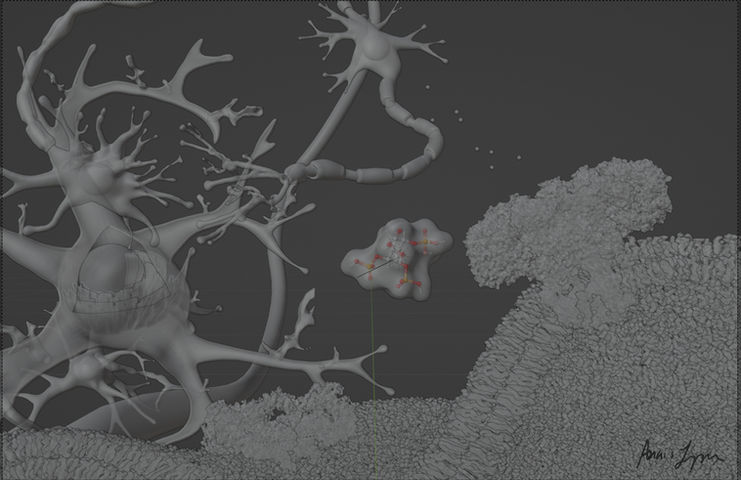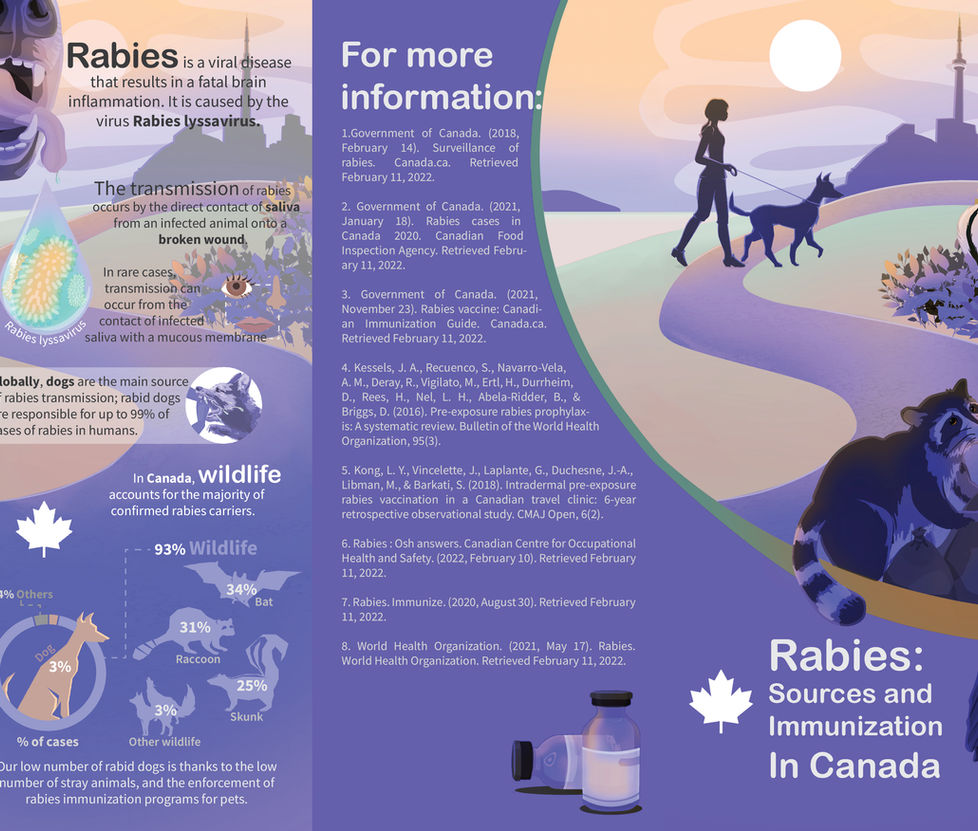
Welcome to my
Portfolio!
3D animation



My animation sets out to engage and educate the general public about the fascinating world of astrocytes. I employed a thought-provoking analogy that likens the brain to a computer's central processing unit (CPU), shedding light on the intricate interaction between neurons and astrocyte.
For more information about my MRP, please check out the dedicated MRP page here!

_coloredits.jpg)




Editorial Cover


IMS Magazine, Winter Issue, 2023
The overarching theme of the issue was research into the disorders of the CNS.
I started by doing some concept sketches and sending them back to the editorial team for approval. Check out the above slide for the approved final sketch.

With the approval of the team, I then started modeling my scene in Blender.
For the cartoon human, I modeled one main character. The rest of the models are derivatives of that first model.
I kept different parts as separate objects, and used a basic skeletal rig with weight paint to pose the different characters.
The stacks of papers were created with the use Blender's newly released feature: Geometry Nodes.
I used Eevee (Blender's realtime render engine) to render this piece to keep with the stylized look.
Read the issue: IMS Magazine Winter 2023


Neuroportrait
Fun fact: this is based on my actual brain!
Digital painting onto the render from the 3D model
Planning skull and brain placement
MRI data
Rough 3D model extracted
Visual Representation of Biomolecular Structure and Function
Visual Representation of Biomolecular Structure and Function
The IP3 molecule was sourced from PubChem. The IP3 receptor was from Schmitz et al. (2022). The lipids in the lipid bilayer were obtained from CHARMM-GUI.
National Center for Biotechnology Information (2022). PubChem Compound Summary for CID 439456, d-Myo-inositol-1,4,5-triphosphate. Retrieved August 10, 2022 from CHARMM GUI https://pubchem.ncbi.nlm.nih.gov/compound/439456.
Schmitz, E. A., Takahashi, H., & Karakas, E. (2022). Structural basis for activation and gating of IP3 receptors. Nature communications, 13(1), 1408. https://doi.org/10.1038/s41467-022-29073-2
Jo, S., Kim, T., Iyer, V.G. and Im, W. (2008), CHARMM-GUI: A web-based graphical user interface for CHARMM. J. Comput. Chem., 29: 1859-1865. https://doi.org/10.1002/jcc.20945



Show me the Unseen
The 3D maquette is modified from the heart model available at: https://lifesciencedb.jp/bp3d/
I have sacrificed many pig's hearts to my tissue texture study.

Freeform Sculpt




I researched the scute patterns specific to this caiman species.
I then drew out the patterns and turn them into ZBrush sculpt brushes.
Infographic
Design Considerations:
First, I considered my audience. I do not want my pamphlet to be like a cigarette box horror show. I do not want to scare people with obvious needle imagery or realistic animal attacks. I want to entice people to pick up the pamphlet and go through the material.
Second, I studied infographics and pamphlet examples. I found that many infographics are presented as a one-page poster. However, as I would like this to be an engaging pamphlet, I have spent some time thinking about how to fit the information into the 3-column format.
I ended up breaking free of the up-and-down reading constraints. I took inspiration from old zoo maps where animal exhibits would be placed next to the marked location.
By using a pathway, I am able to nudge the readers to follow the pathway, rather than strictly up-and-down reading order.
3D Data Reconstruction


The skull reconstruction is based on the Panthera leo CT scan from Digimorph.org (contributed by Dr. Pamela Owen, University of Texas at Austin)
BMC Scicards: Science Themed Trading Cards


As seen here: Biomedical Communications students create science trading cards — Master of Science in Biomedical Communication (utoronto.ca)


Surgical Sequence Comprehensive Draft




Pathology Magazine Spread

















